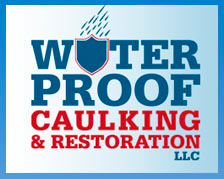 Water damage is one of the leading causes of home insurance claims, accounting for nearly 30% of all claims filed. Many of these claims stem from flooding and water seepage issues in basements. As a homeowner, implementing preventative exterior basement waterproofing measures is the secret to avoiding expensive insurance claims while saving costs, stress, and home damage.
Water damage is one of the leading causes of home insurance claims, accounting for nearly 30% of all claims filed. Many of these claims stem from flooding and water seepage issues in basements. As a homeowner, implementing preventative exterior basement waterproofing measures is the secret to avoiding expensive insurance claims while saving costs, stress, and home damage.
The Connection Between Exterior Basement Waterproofing and Insurance Claims
Most standard home insurance policies cover sudden water damage events, such as pipe bursts. However, they usually exclude gradual deterioration or long-term seepage due to aging infrastructure or lack of maintenance. Flooding also requires separate flood insurance.
Insurers often limit future coverage if you file multiple moisture damage claims without fixing the underlying causes. After a claim is filed, you may need to install approved waterproofing solutions to continue your policy. Documented prevention systems impact premium costs, too.
How Proactive Exterior Basement Waterproofing Helps Avoid Claims
Being proactive with moisture protection keeps minor problems from becoming major insurance claims. Here’s how acting early helps dodge issues:
Preventing Damage Reduces Claim Risks
Complete waterproofing guards against seepage, keeping damage contained. Tiny cracks expand into major leaks over time without sealing. Addressing minor leaks as they appear prevents exponential deterioration and avoids significant rebuilding projects later.
Documented Protection Supports Coverage Terms
Insurers need professional documentation of quality waterproofing installations to continue favorable policy terms after a claim. Stringent details on products and services performed give proof that necessary measures were taken.
Well-Maintained Systems Demonstrate Responsibility
Properly maintaining your waterproofing system with detailed records illustrates your commitment to maintaining your home’s integrity. Insurers value seeing homeowners take responsibility through regular upkeep measures.
Higher Property Value Minimizes Claim Effects
Extensive water damage can significantly reduce a home’s worth. Documented industrial-grade waterproofing boosts assessed valuations. If claims occur, the impact remains minimal with proactive protection supporting the maximum property value retention.
Best Practices for Proactive Basement Waterproofing
Creating strong protection against moisture requires an integrated system combining interior drainage, exterior barrier walls, site drainage, plus sealing cracks and openings. Best practice strategies include:
Professional Site Evaluations
 Professionals perform in-depth site assessments, checking for red flags such as missing downspout extensions, no window well covers, poor drainage slopes, wall cracks, and other risks. They address all identified hazards.
Professionals perform in-depth site assessments, checking for red flags such as missing downspout extensions, no window well covers, poor drainage slopes, wall cracks, and other risks. They address all identified hazards.
Interior Drainage Systems
Interior perimeter drainage lines with sump pumps provide the first line of defense in collecting seepage and expelling it outside before flooding develops inside. Routine maintenance is essential.
Exterior Barrier Wall Applications
Special waterproof coating compounds applied directly to exterior foundation walls seal out moisture before it passes to the interior drainage system. Barrier walls handle immense hydrostatic pressure.
Crack Injections and Opening Seals
All cracks in poured concrete walls and openings for utilities/vents should undergo professional sealing to waterproof the outer structural shell.
Grading and Drainage Improvements
Effective grading secures the terrain slopes away from your home’s foundation, so surface water never pools around the base. Professional landscapers can regrade flaws.
Documentation and Insurance Considerations
Work with reputable waterproofing companies that provide detailed documentation of all services, products used, diagrams of installations, and before-and-after photos. Thorough paperwork illustrates your dedication to insurance providers.
Seeking at least three binding bids proves you have investigated responsible solutions if you file claims later. Recording dates and out-of-pocket costs is also wise.
Request written certification of workmanship and multi-year warranties, too, as this coverage can assist policy assessments after claims.
Avoid DIY Waterproofing for Insurance Purposes
Insurers need third-party validation of proper waterproofing installations, which homemade solutions lack. Also, incorrect DIY work often necessitates costly re-dos by professionals later, without insurance assistance.
Utilize Industry Terms on Paperwork
When reviewing project documentation, insurers analyze terminology used to assess whether standard waterproofing protocols were followed. Specific words such as “positive side hydrostatic pressure relief,” “aggregate drainage fill backfill,” “annealed surface bonding,” and “slope grade improvements” help validate professional-level work.
Photograph All Completed Work
Detailed photographs add immense documentary power. Capture application procedures being performed on walls, showing before-and-after shots. Zoomed-in shots prove thorough sealing. Pictures provide proof of quality workmanship to insurance evaluators.
Seek Multi-Year Transferable Warranties
In addition to illustrating recent prevention measures, transferable product and labor warranties extending for five or ten years show insurers that responsibility for maintaining protection extends well into the future as homeownership changes. This earns further premium incentives.
Book the Exterior Basement Waterproofing Professionals
While home insurance provides financial support after catastrophic water damage, making claims often proves highly stressful for families. Plus, making multiple claims can risk future coverage denial.
Waterproof Caulking & Restoration is a fully certified commercial caulking specialist dedicated to precisely sealing building envelopes against moisture. Contact us today at 484-265-9646 or online for an immediate consultation on waterproofing your property to avoid future insurance claims.

